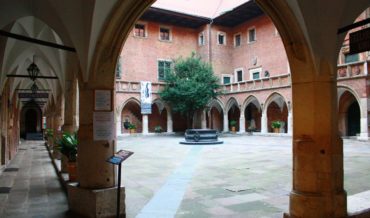Contents
Key Facts
- Born in 1921 in Lviv (then part of Poland, now Ukraine) and died in 2006 in Krakow
- World-renowned science fiction author with works translated into over 40 languages
- Medical student at the Jagiellonian University in Krakow who never completed his degree
- Author of "Solaris", his most famous work adapted multiple times for film
- Member of prestigious scientific organizations including the Polish Academy of Sciences
- Honored with Asteroid 3836 Lem named after him by the International Astronomical Union in 1979
- Recipient of cosmonautics medal from Soviet cosmonaut Alexei Leonov in 1995
- Published over 40 books during his prolific literary career spanning six decades
Early Life and Education
Stanisław Lem was born on September 12, 1921, in Lviv (then Lwów in the Second Polish Republic, now Ukraine), into an upper-middle-class family. His father, Samuel Lem, was a successful laryngologist, while his mother, Sabina Woller, came from a well-educated family. This intellectual environment proved formative for young Stanisław's future as one of the most celebrated writers in philosophical science fiction literature.
In 1940, he began medical studies at the Jan Kazimierz University in Lviv, following somewhat in his father's footsteps in the medical field. However, his educational journey was dramatically interrupted by World War II and the subsequent geopolitical changes in the region. The war years were particularly challenging for Lem and his family, who, being of Jewish descent, faced severe persecution under Nazi occupation.
During the war, he worked as a car mechanic and welder, practical skills that not only helped him survive the difficult wartime conditions but also provided him with technical knowledge that would profoundly influence his science fiction writing. This hands-on experience with machinery and technology became evident in the meticulously detailed technical descriptions and mechanical processes found throughout his literary works, particularly in novels like "Invincible" and "Return from the Stars."
After the war, Lem relocated to Krakow, where he continued his medical studies at the Jagiellonian University. However, he never completed his medical degree, reportedly because he refused to affirm the principles of dialectical materialism required by the communist authorities. This decision marked a crucial turning point that led him toward his true calling as a writer and philosophical thinker.
Literary Career and Major Works
Early Publications and Development
Lem's literary journey began in the immediate post-war period when he published his first novel in 1946, entitled "Człowiek z Marsa" (Man from Mars). This debut work, while not as sophisticated as his later productions, established his interest in science fiction themes and marked the beginning of what would become an extraordinarily prolific career spanning over five decades.
His early works showed clear influence from his medical background and wartime technical experience. The precision with which he described biological processes, technological systems, and scientific procedures reflected his formal scientific education and practical mechanical knowledge. Today, his contributions are celebrated alongside other famous Polish people who have made significant cultural impact.
Major Science Fiction Works
Stanisław Lem became renowned as one of the most intellectually rigorous representatives of philosophical science fiction, but his influence extended far beyond genre boundaries. His approach to science fiction was revolutionary, combining rigorous scientific methodology with profound philosophical inquiry and often satirical social commentary. His major works include:
Classic Science Fiction Novels:
- "Astronauci" (The Astronauts, 1951) – An early work exploring space exploration themes and humanity's first contact with alien civilization
- "Obłok Magellana" (The Magellanic Cloud, 1955) – A space opera depicting humanity's expansion into the cosmos and the challenges of interstellar travel
- "Powrót z gwiazd" (Return from the Stars, 1961) – A profound meditation on the effects of relativistic time dilation and social evolution
- "Niezwyciężony" (The Invincible, 1964) – A haunting exploration of humanity's encounter with non-biological, mechanical evolution on an alien planet
Philosophical and Satirical Masterworks:
- "Pamiętnik znaleziony w wannie" (Memoirs Found in the Bathtub, 1961) – A dystopian satire of bureaucratic paranoia and information warfare
- "Głos Pana" (His Master's Voice, 1968) – A complex philosophical exploration of humanity's attempts to decode extraterrestrial messages and the limitations of human understanding
- "Dzienniki gwiazdowe" (The Star Diaries, 1957-1971) – Humorous satirical tales featuring the space traveler Ijon Tichy, critiquing human follies through cosmic adventures
- "Dialogi" (Dialogues, 1957) – Philosophical discussions on cybernetics, artificial intelligence, and the future of human-machine interaction
Non-Fiction and Theoretical Works:
- "Summa Technologiae" (1964) – Lem's seminal non-fiction work exploring virtual reality ("phantomatics"), artificial intelligence, and technological evolution
- "Filozofia przypadku" (Philosophy of Chance, 1968) – Essays on probability, evolution, and the role of chance in biological and technological development
- "Wysoki zamek" (High Castle, 1966) – A lyrical autobiographical memoir of his childhood in Lviv
Solaris: The Philosophical Masterpiece
Among all his works, "Solaris" (1961) stands as Lem's most internationally recognized masterpiece. This philosophical science fiction novel explores the fundamental epistemological problem of communication between humans and truly alien intelligence. The story, set on a space station orbiting the mysterious planet Solaris with its sentient ocean, delves deep into questions of memory, consciousness, grief, and the cognitive limitations of human understanding.
What makes "Solaris" particularly significant is Lem's rejection of anthropocentric assumptions common in science fiction. The alien intelligence in "Solaris" remains genuinely incomprehensible, challenging readers to confront the possibility that true alien consciousness might be forever beyond human comprehension—a concept rooted in Kantian epistemological limitations.
"Solaris" was adapted for film by Andrzej Tarkovsky in 1972, creating one of the most acclaimed philosophical science fiction films in cinema history. The novel was later adapted again by Steven Soderbergh in 2002, testament to its enduring philosophical relevance and psychological complexity.
International Recognition and Intellectual Influence
Lem achieved extraordinary international recognition, with his works translated into over 40 languages and selling over 45 million copies worldwide. His influence extends far beyond literature into philosophy, futurology, cybernetics, and scientific discourse, making him one of the most intellectually influential science fiction writers in history.
Stanisław Lem was a member of various prestigious organizations including the Science Fiction Research Association and initially the Science Fiction Writers of America (SFWA). However, his SFWA membership became controversial and was eventually revoked in 1976 following his critical essays about American science fiction. Lem criticized what he perceived as the genre's excessive focus on adventure and commercial appeal rather than serious scientific and philosophical speculation. His critiques, published in essays like "Science Fiction: A Hopeless Case—With Exceptions," argued that most American science fiction lacked intellectual rigor and failed to engage seriously with scientific and philosophical implications of technological advancement.
In 1973, he became a corresponding member of the Polish Academy of Sciences, where he contributed his expertise in futurology and technological forecasting. His prescient essays on cybernetics, artificial intelligence, and future technology anticipated many developments in computer science, biotechnology, and information theory that wouldn't emerge until decades later.
Scientific Predictions and Technological Vision
Lem's remarkable prescience regarding technological development deserves particular attention. In "Summa Technologiae" (1964), he explored concepts that wouldn't become mainstream until the internet age:
- Virtual reality systems (which he termed "phantomatics") predating modern VR by decades
- Artificial intelligence and machine learning possibilities, including concerns about AI consciousness
- Nanotechnology and molecular engineering applications
- Information theory and the digitization of human experience
- Biotechnology and genetic engineering implications
These predictions weren't mere speculation but were grounded in rigorous analysis of contemporary scientific trends and mathematical principles, demonstrating Lem's exceptional ability to extrapolate from existing knowledge to future possibilities. His fascination with aviation and technological advancement would resonate with visitors to institutions like the Polish Aviation Museum.
Honors and Scientific Legacy
The extent of Lem's influence on both literature and science is reflected in numerous prestigious honors. Asteroid 3836 Lem, discovered by Soviet astronomer Nikolai Stepanovich Chernykh in 1979, was officially named in his honor by the International Astronomical Union—a fitting tribute to a writer who spent his career exploring cosmic themes through rigorous scientific imagination.
In 1995, Lem received a medal for contributions to cosmonautics development from Soviet cosmonaut Alexei Leonov, presented in a ceremony attended by 70 cosmonauts and astronomers from 19 countries. This recognition from the international space community highlighted how his fictional works had inspired real scientific endeavors and space exploration efforts.
Additional prestigious honors included the Order of the White Eagle (Poland's highest decoration), the Austrian State Prize for European Literature, and numerous international literary awards recognizing both his artistic achievement and scientific contribution. His legacy is now preserved in various cultural institutions, including the National Museum which houses collections celebrating Poland's intellectual heritage.
Connection to Krakow
Krakow played a pivotal role in Lem's intellectual development and creative output. After relocating to continue his medical studies at the Jagiellonian University, Lem made Krakow his permanent home and creative sanctuary. The city's rich intellectual atmosphere, centered around one of Europe's oldest and most prestigious universities, provided the ideal environment for his literary and philosophical development. Visitors today can explore the Jagiellonian University Museum to better understand the academic environment that shaped his early years.
During his decades in the city, Lem would have been familiar with Krakow's historic landmarks, including the beautiful Planty park surrounding the Old Town, where he might have taken contemplative walks while developing his philosophical ideas. The city's vibrant cultural scene, supported by institutions like the International Cultural Center, provided an environment conducive to intellectual exchange and artistic development.
Lem died on March 27, 2006, in Krakow, where he had spent the majority of his adult life writing most of his masterpieces. His six-decade presence in the Malopolska region significantly contributed to the area's reputation as a major center of Polish intellectual and cultural life. The historic Old Town and its surroundings provided the perfect backdrop for a writer whose imagination spanned the cosmos yet remained grounded in profound philosophical inquiry.
Philosophical Legacy and Contemporary Relevance
What distinguished Lem from his contemporaries was his profound engagement with epistemological questions and his methodologically rigorous approach to scientific speculation. His works consistently explored fundamental themes such as the cognitive limits of human knowledge, the impossibility of genuine communication with truly alien intelligence, and the ethical implications of technological advancement.
Lem was particularly prescient regarding cybernetics, artificial intelligence, and information theory. His philosophical investigations into human-computer interaction, artificial consciousness, and the potential emergence of superintelligent systems seem remarkably prophetic in our current era of advanced AI development and machine learning breakthroughs.
His literary and philosophical legacy transcends entertainment, establishing him as a serious intellectual figure who utilized science fiction as a sophisticated vehicle for exploring humanity's most profound questions about consciousness, communication, knowledge, and our cosmic significance. Contemporary philosophers, cognitive scientists, and AI researchers continue to reference Lem's insights into the nature of intelligence, consciousness, and the fundamental challenges of cross-species or human-machine communication.

